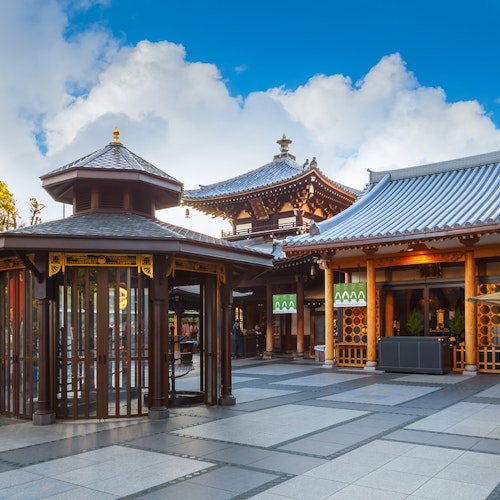Osaka Tenmangu Shrine
4.3 (200)・Tourist Attraction・Place Of Worship・Point Of Interest・Establishment
Hours
Monday: 9:00 AM – 5:00 PM
Tuesday: 9:00 AM – 5:00 PM
Wednesday: 9:00 AM – 5:00 PM
Thursday: 9:00 AM – 5:00 PM
Friday: 9:00 AM – 5:00 PM
Saturday: 9:00 AM – 5:00 PM
Sunday: 9:00 AM – 5:00 PM
Phone
Website
The area
Address
2-chōme-1-8 Tenjinbashi, Kita Ward, Osaka, 530-0041, Japan
What other travelers are saying about Osaka Tenmangu Shrine
This is the famous shrine dedicated to Sugawara no Michizane, known as the deity of learning in Japan. Many students and exam takers come here to pray for academic success and good exam results. If you have a wish, you can write it on an ema and hang it at the shrine to add a special ritual touch.
The shrine’s architecture exudes a traditional charm, and the serene atmosphere offers a peaceful contrast to the bustling city. I especially love the beautifully designed courtyard, full of intricate details—perfect for taking memorable photos!
Chester Lai
Mar 27, 2025
What a beautiful contrast between the modern urban area of Osaka and this place! People also lovely, the souvenirs (charm/amulet) are good designs and seem to be effective (haha, at least for my friend). Go back for sure. *Haven't bought any advance ticket yet.
Saint Awirote
Dec 8, 2024
Worth a quick diversion if you are visiting. We are not adherants to this faith, however it was clear that a key purpose was one of calm, and it was very effective.
It was very cool for us to see a touch of Australia for us Aussies through the Friendship Monument
Ken Abdy
Oct 25, 2024
This is a very traditional shrine. I came here for my child's Omiyamairi (shrine visit), and I was very satisfied with how quickly we were able to proceed with the ceremony. However, there is little shade, so be cautious if you visit on a hot day. It's particularly important to take care if you have young children or elderly people with you. Despite the lack of shade, the experience was wonderful and the shrine's traditional atmosphere made it a memorable visit.
Jun Amano
Jul 31, 2024
Fantastic place to get away from the crowds of Osaka. Peaceful, quaint and minimal tourists.
There's worship areas and tourist spaces for people who just wish to look around and not take part in any religious ceremonies. Though there is a place to purchase items for offering and wishes.
Unfortunately it was lightly raining during my visit, but even still, I enjoyed the atmosphere and the scenery.
Nicholas Dove
Apr 21, 2024











